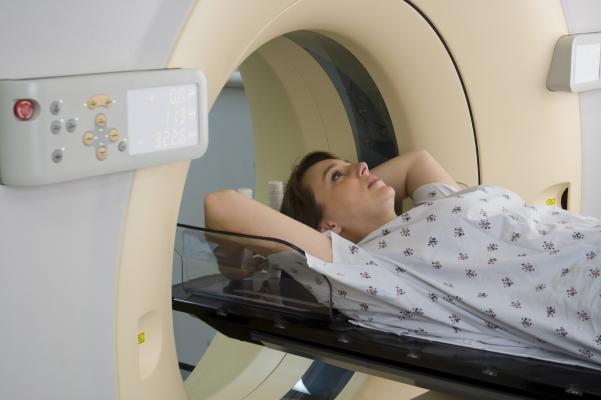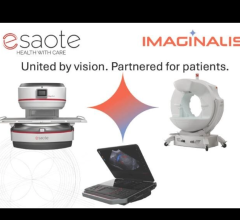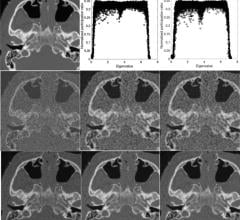
May 6, 2013 — Researchers at New York University and NYU Langone Medical Center have created a novel way to enhance magnetic resonance imaging (MRI) by reducing interference from large macromolecules that can often obscure images generated by current chemical exchange saturation transfer (CEST) methods.
Their work appears in the Nature publishing group journal Scientific Reports and hopes to improve MRI for cartilage as well as for brain tissue.
"We have found a way to eliminate signals of certain molecules and thereby clean up the image of parts of the body that could be used by medical professionals in order to make diagnoses," explained Alexej Jerschow, one of the study’s authors and a professor in NYU's Department of Chemistry.
The researchers' work aims to improve a decade-old method, chemical exchange, which has been used to enhance MRI techniques. Under this approach, scientists exploit the movement of atoms from their natural molecular structure to water in the body in order to enhance their visibility.
However, these efforts have often been hindered by the presence of macromolecules, which continue to obscure the smaller molecules that are of interest to doctors and other health-care professionals in making assessments. The macromolecules' interference is the result of two phenomena: their size and their frequencies.
Neutralizing the macro-molecular frequency interference was the focus of the NYU method reported in Scientific Reports.
Previously, authors Jerschow and Ravinder Regatte, professor, Departments of Radiology and Orthopedic Surgery, NYU Langone Medical Center, and colleagues created a non-invasive imaging technique for glycosaminogycans (GAGs), which are molecules that serve as the building blocks of cartilage and are involved in numerous vital functions in the human body. Here, under chemical exchange, they separated out the GAG protons from those of water, creating an inherent contrast agent. Testing the idea in tissue samples, the researchers found that the available GAG protons provided an effective type of contrast enhancement, allowing them to readily monitor GAGs through a clinical MRI scanner.
The researchers focused on improving visibility of GAGs through MRI. But, in this effort, they sought to block the signaling impact of the macromolecules that obscure the observation of GAGs.
To do so, they took advantage of macromolecules' broad frequency spectrum — a trait that allows for easy detection and neutralization. Specifically, the researchers could, in effect, "bleach" the signal out by simultaneously using multiple irradiation frequencies. As a result, macromolecular interference diminished and enhanced the quantitative assessment of GAGs.
"This method gives us the opportunity to correct existing CEST methods by focusing on molecular signals of interest with much better precision than currently exists," explains Regatte.
For more information: www.nature.com/srep


 December 04, 2025
December 04, 2025 









